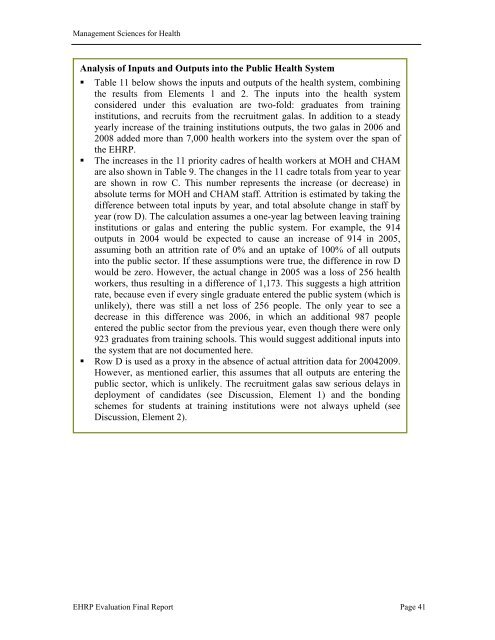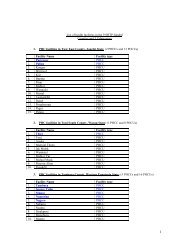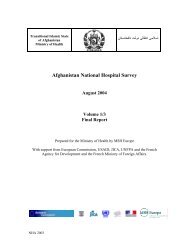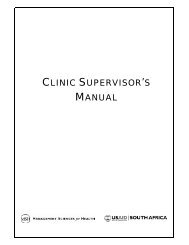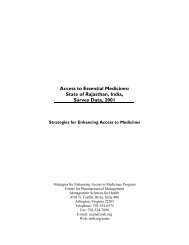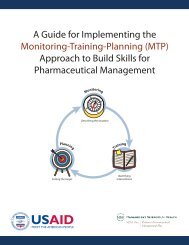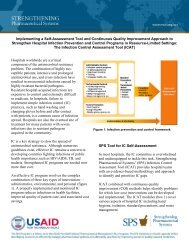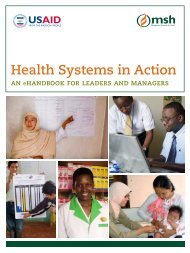Evaluation of Malawi's Emergency Human Resources Programme
Evaluation of Malawi's Emergency Human Resources Programme
Evaluation of Malawi's Emergency Human Resources Programme
Create successful ePaper yourself
Turn your PDF publications into a flip-book with our unique Google optimized e-Paper software.
Management Sciences for Health<br />
Analysis <strong>of</strong> Inputs and Outputs into the Public Health System<br />
� Table 11 below shows the inputs and outputs <strong>of</strong> the health system, combining<br />
the results from Elements 1 and 2. The inputs into the health system<br />
considered under this evaluation are two-fold: graduates from training<br />
institutions, and recruits from the recruitment galas. In addition to a steady<br />
yearly increase <strong>of</strong> the training institutions outputs, the two galas in 2006 and<br />
2008 added more than 7,000 health workers into the system over the span <strong>of</strong><br />
the EHRP.<br />
� The increases in the 11 priority cadres <strong>of</strong> health workers at MOH and CHAM<br />
are also shown in Table 9. The changes in the 11 cadre totals from year to year<br />
are shown in row C. This number represents the increase (or decrease) in<br />
absolute terms for MOH and CHAM staff. Attrition is estimated by taking the<br />
difference between total inputs by year, and total absolute change in staff by<br />
year (row D). The calculation assumes a one-year lag between leaving training<br />
institutions or galas and entering the public system. For example, the 914<br />
outputs in 2004 would be expected to cause an increase <strong>of</strong> 914 in 2005,<br />
assuming both an attrition rate <strong>of</strong> 0% and an uptake <strong>of</strong> 100% <strong>of</strong> all outputs<br />
into the public sector. If these assumptions were true, the difference in row D<br />
would be zero. However, the actual change in 2005 was a loss <strong>of</strong> 256 health<br />
workers, thus resulting in a difference <strong>of</strong> 1,173. This suggests a high attrition<br />
rate, because even if every single graduate entered the public system (which is<br />
unlikely), there was still a net loss <strong>of</strong> 256 people. The only year to see a<br />
decrease in this difference was 2006, in which an additional 987 people<br />
entered the public sector from the previous year, even though there were only<br />
923 graduates from training schools. This would suggest additional inputs into<br />
the system that are not documented here.<br />
� Row D is used as a proxy in the absence <strong>of</strong> actual attrition data for 20042009.<br />
However, as mentioned earlier, this assumes that all outputs are entering the<br />
public sector, which is unlikely. The recruitment galas saw serious delays in<br />
deployment <strong>of</strong> candidates (see Discussion, Element 1) and the bonding<br />
schemes for students at training institutions were not always upheld (see<br />
Discussion, Element 2).<br />
EHRP <strong>Evaluation</strong> Final Report Page 41


